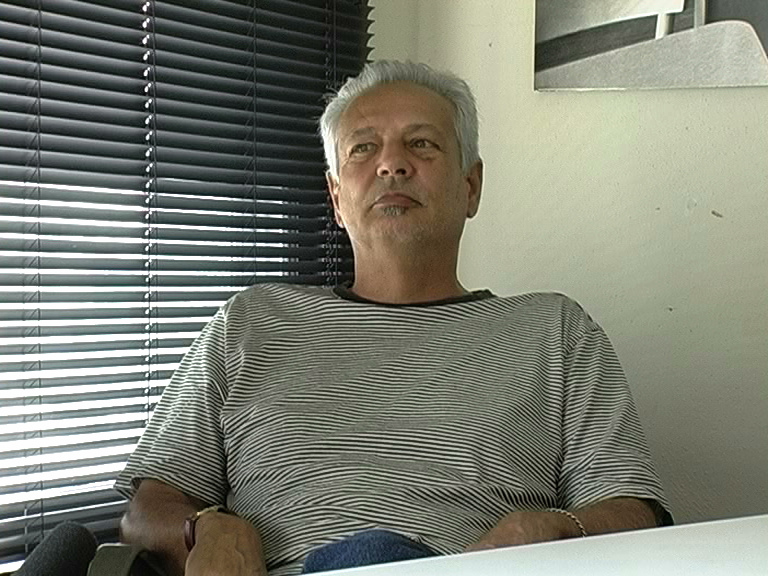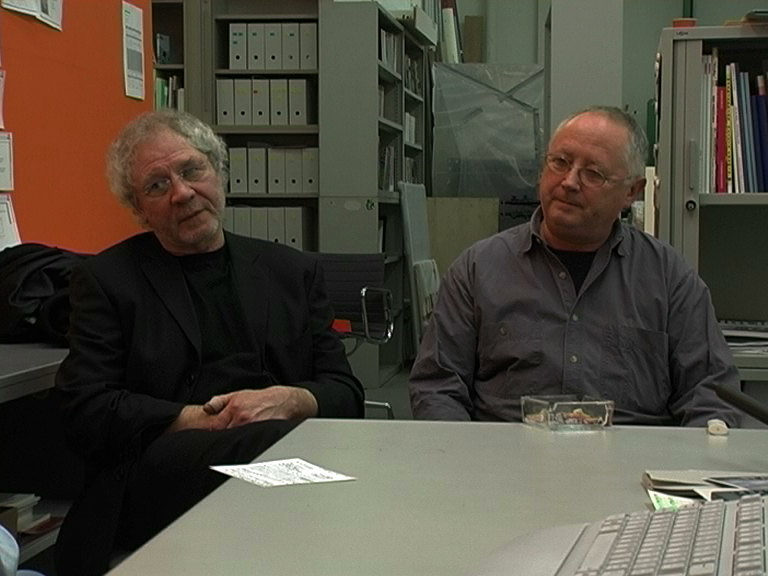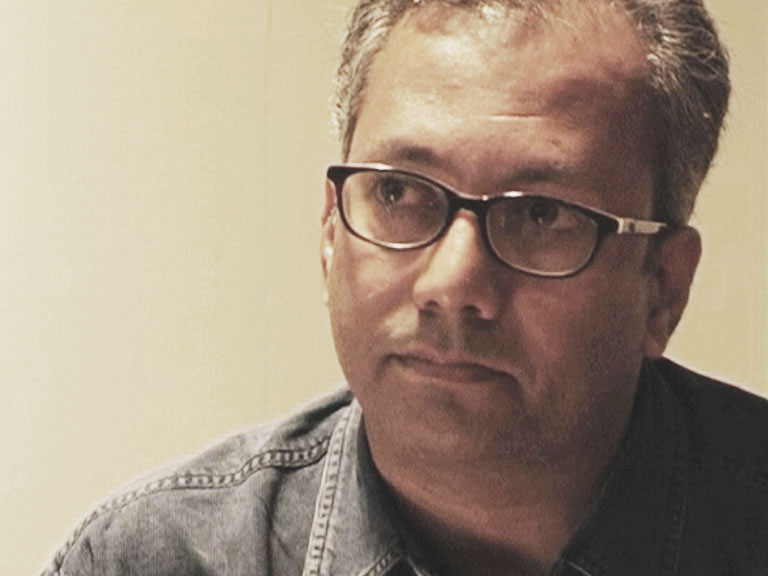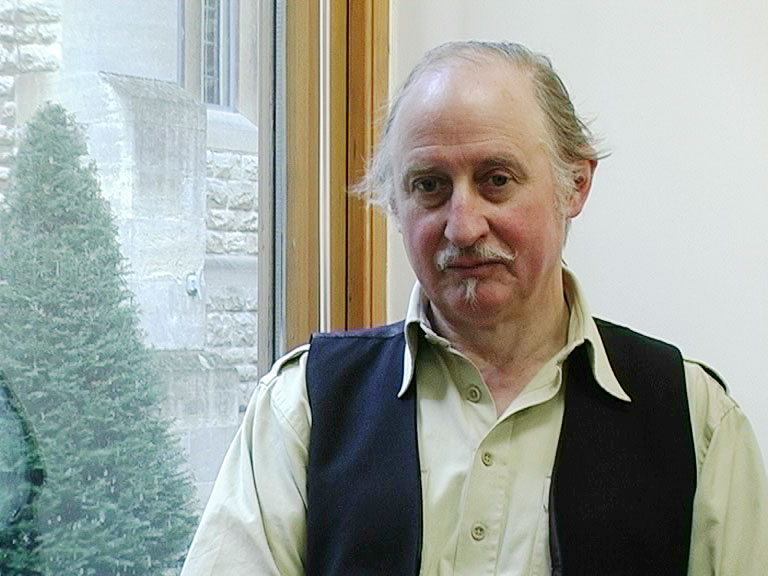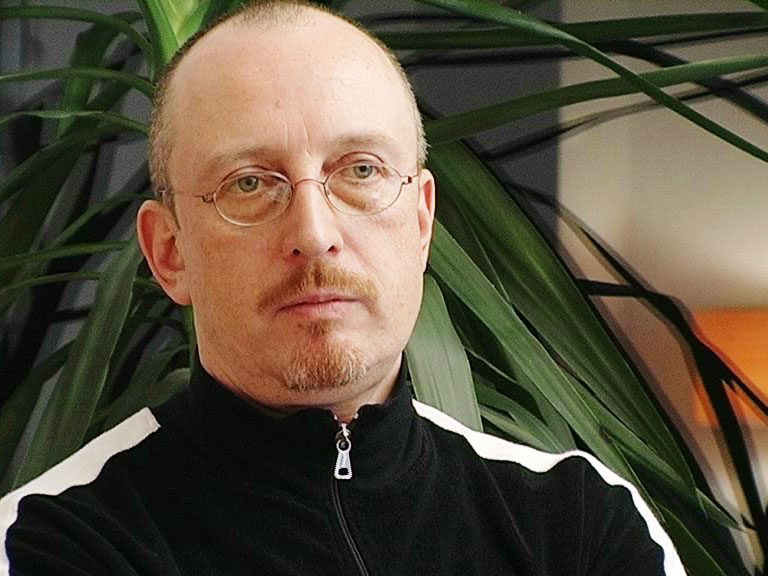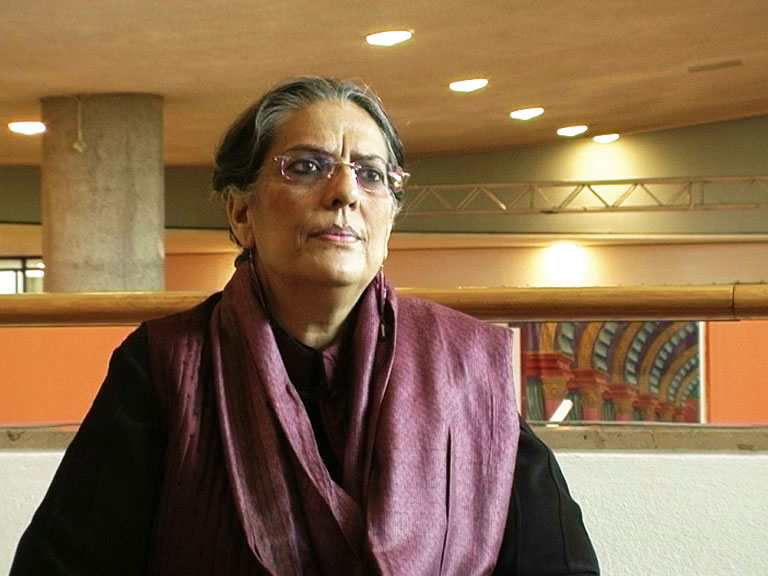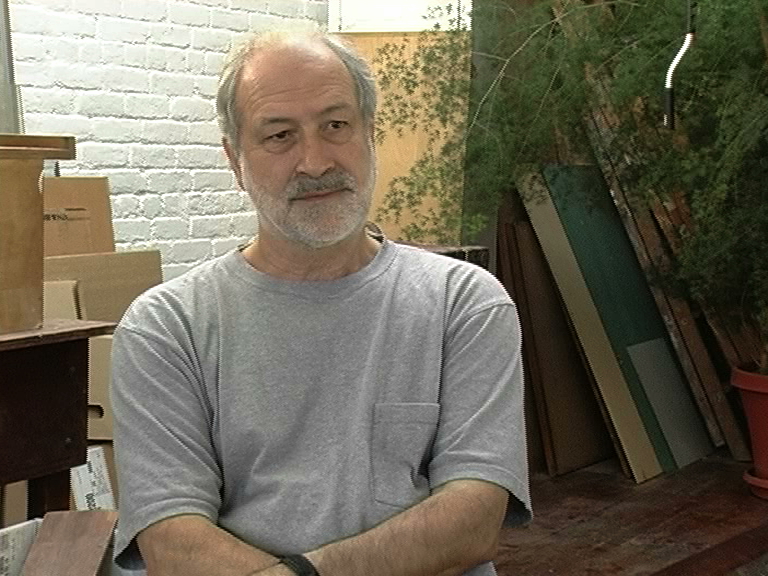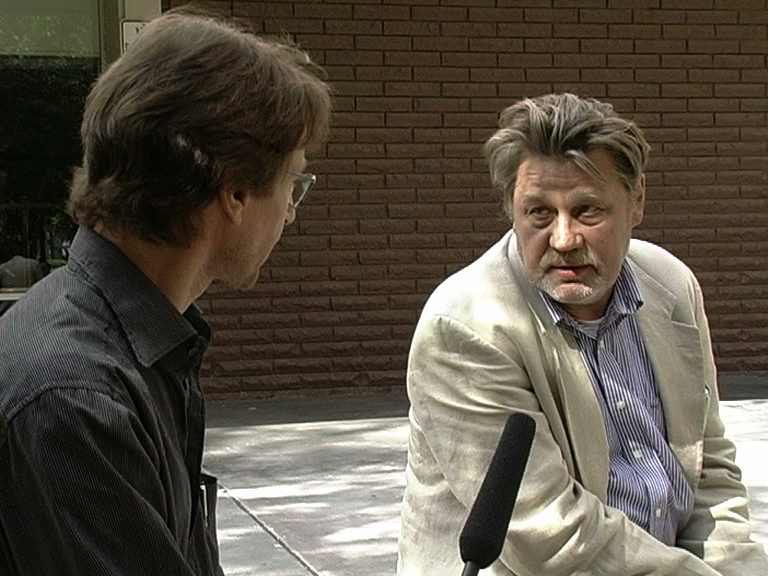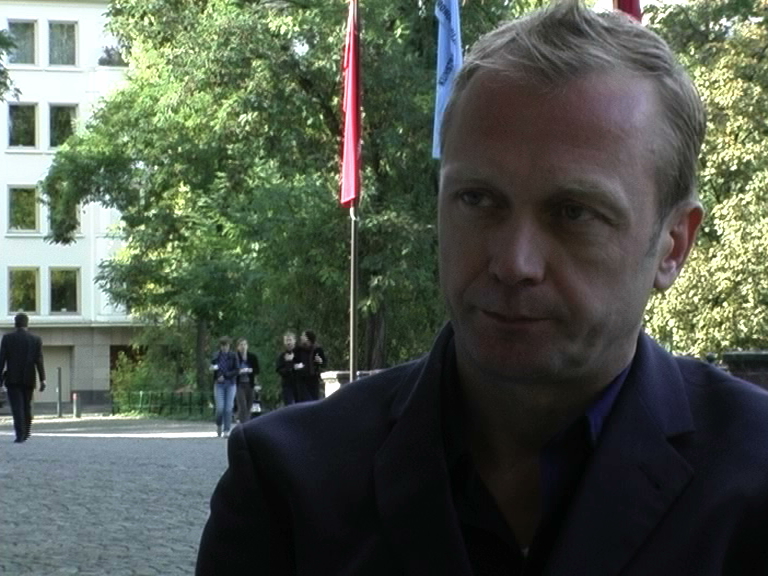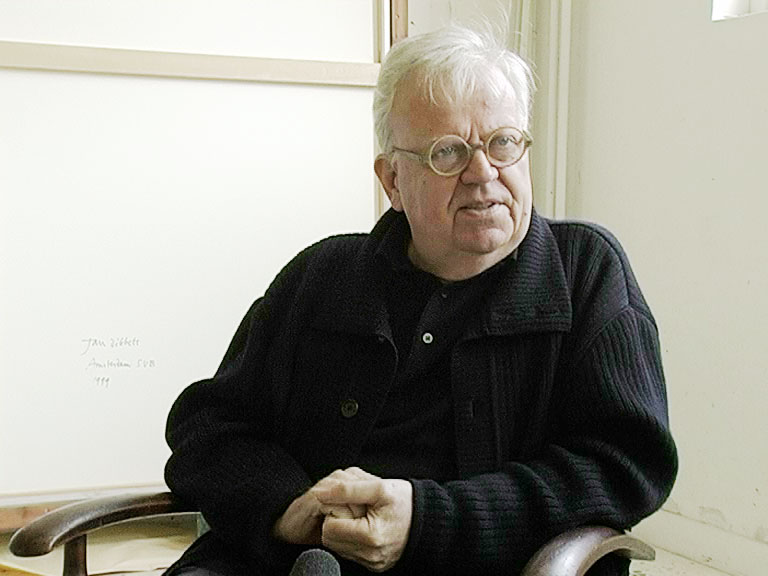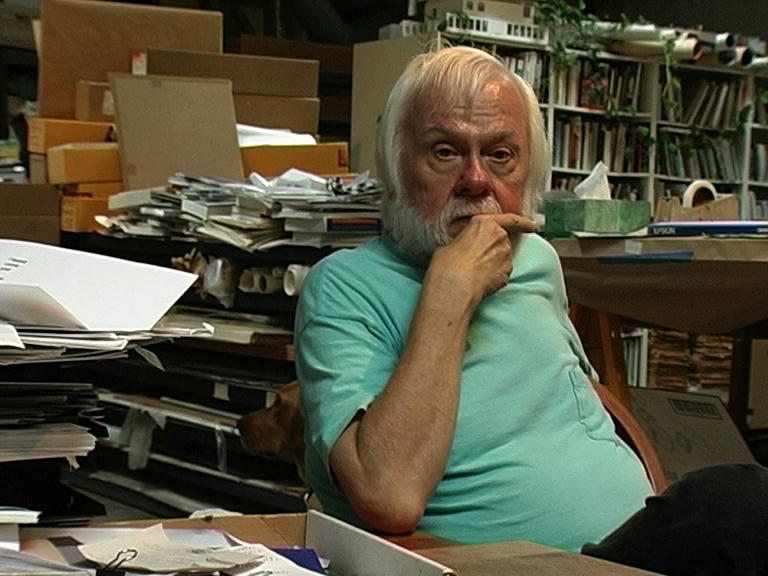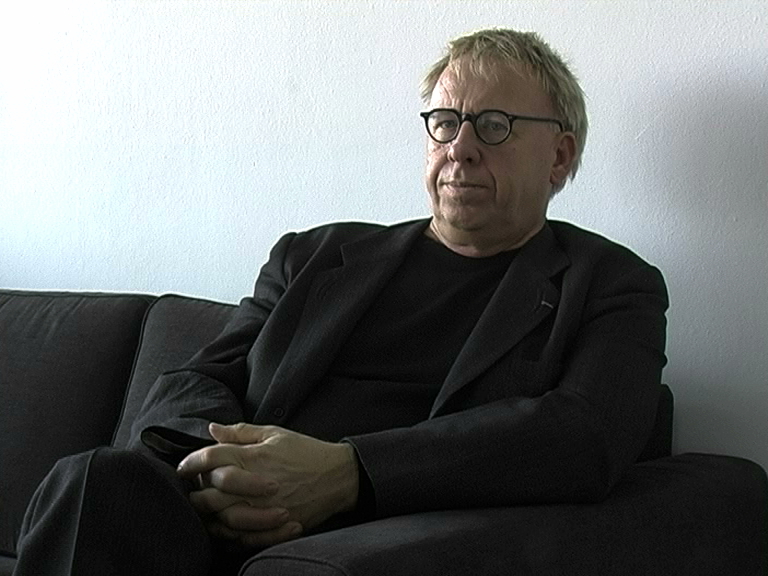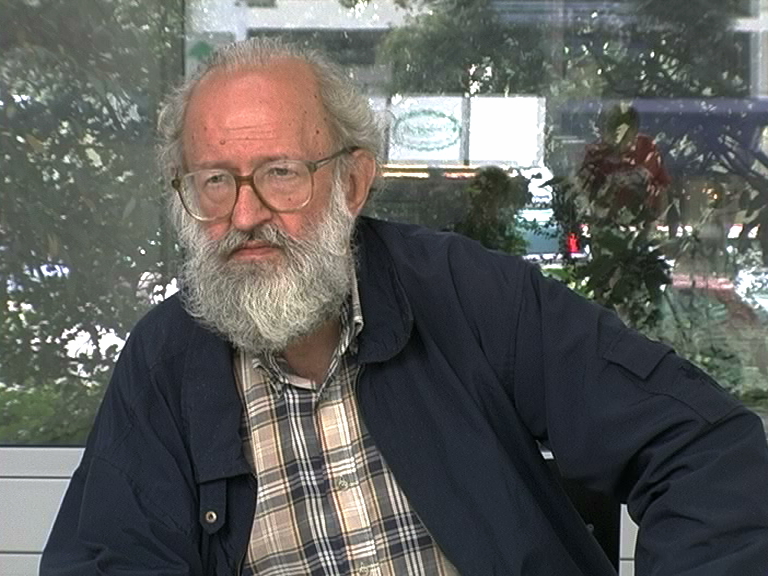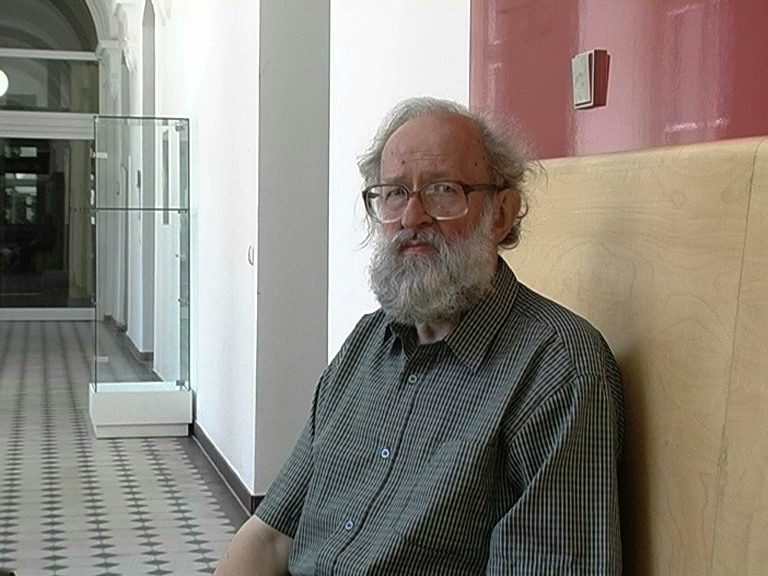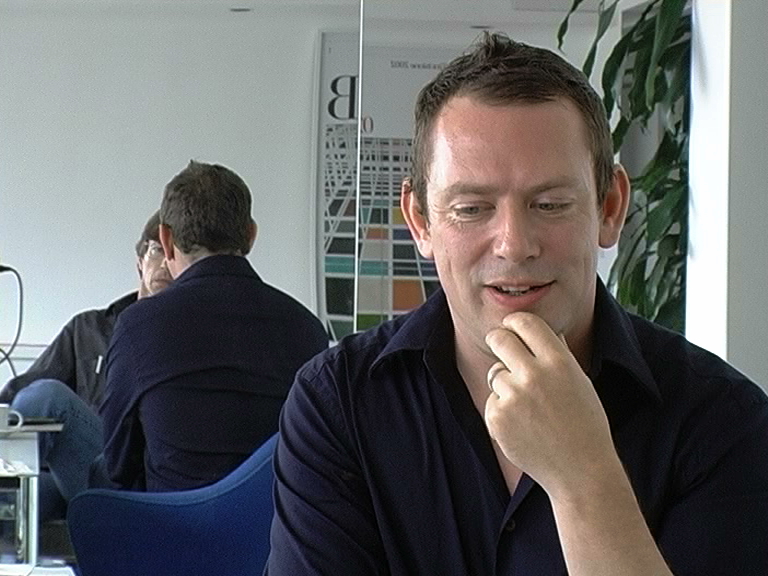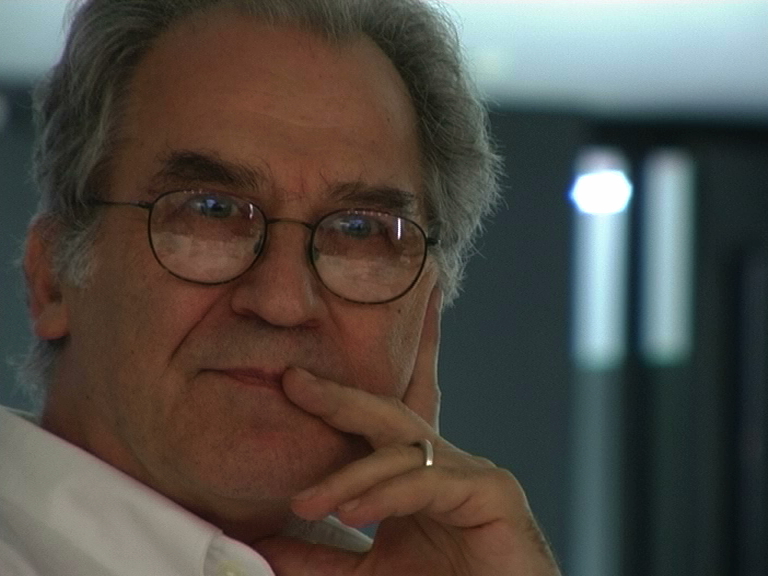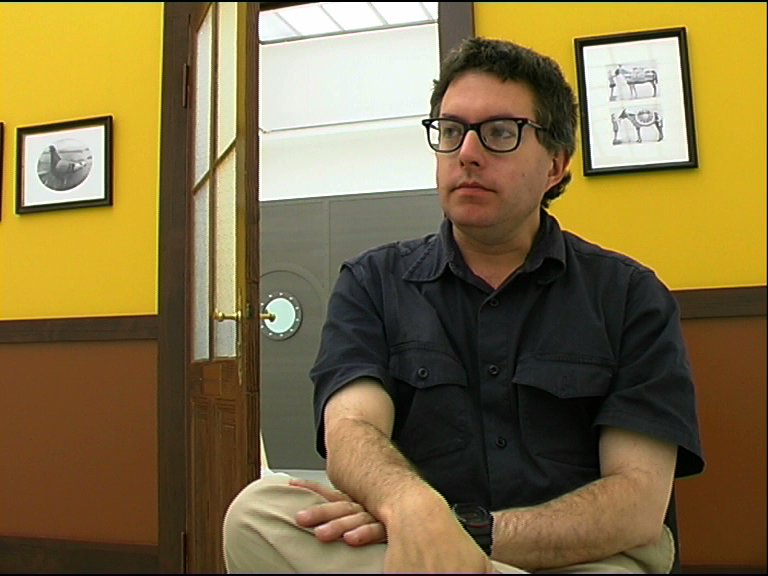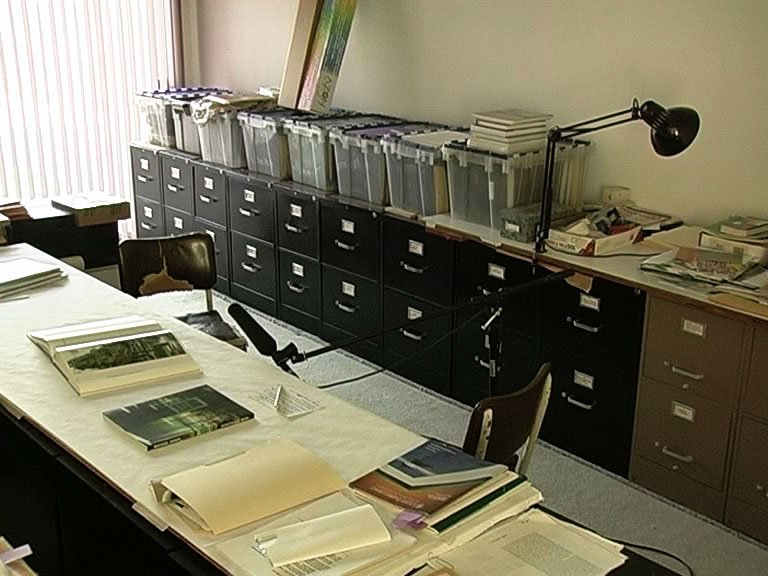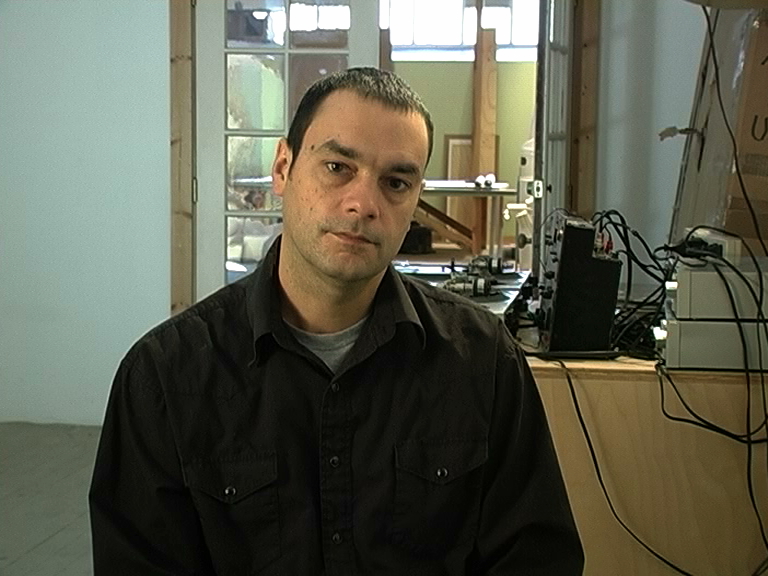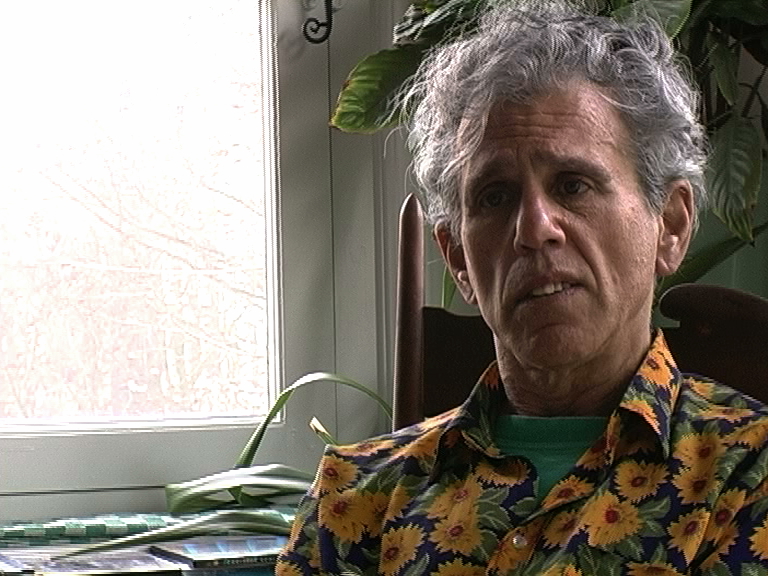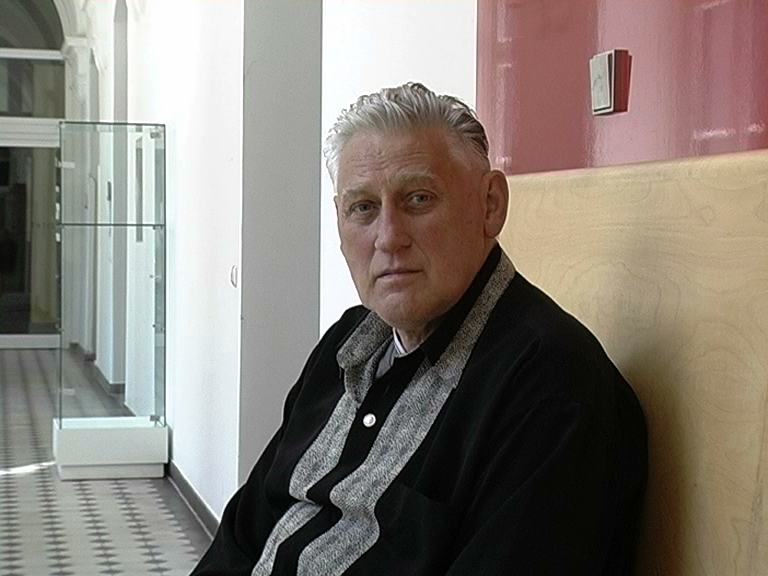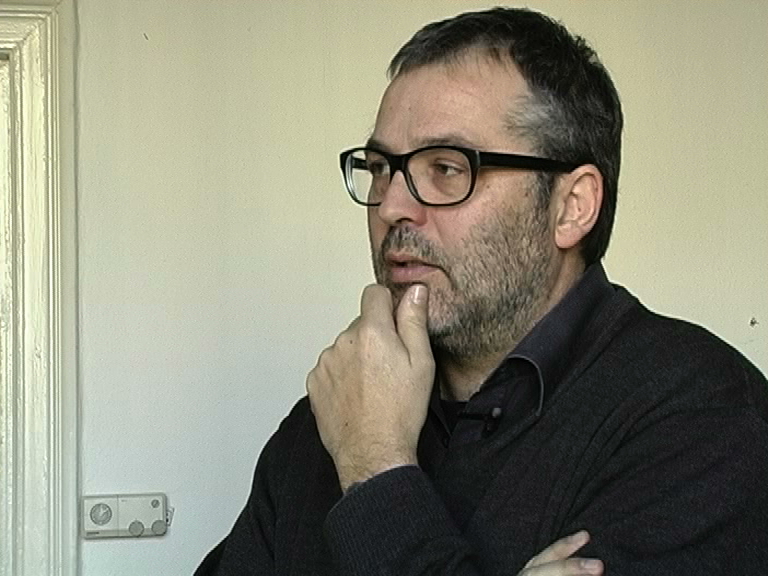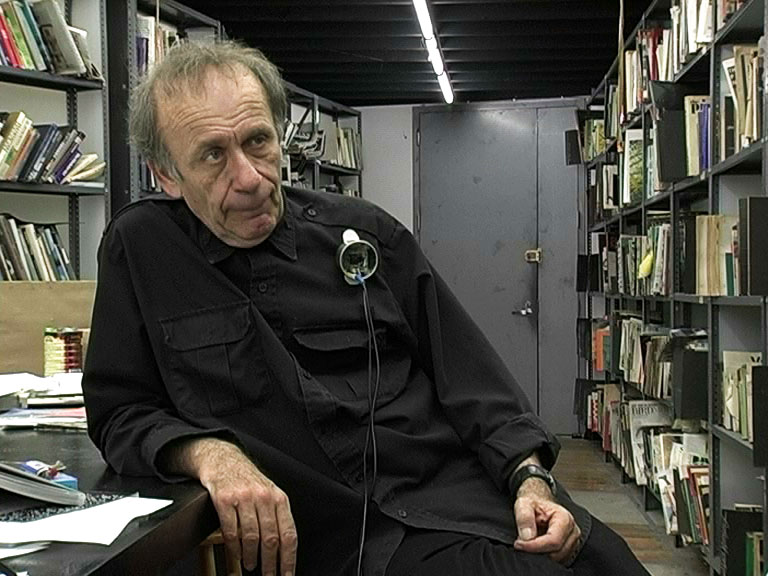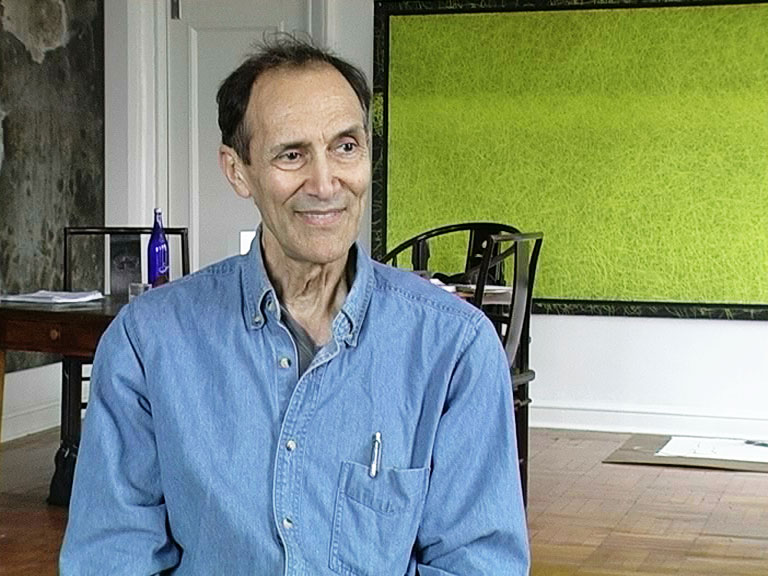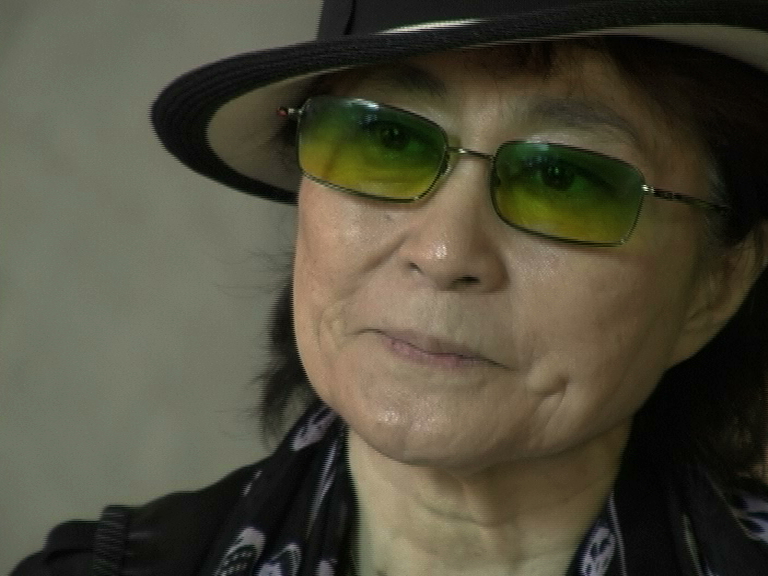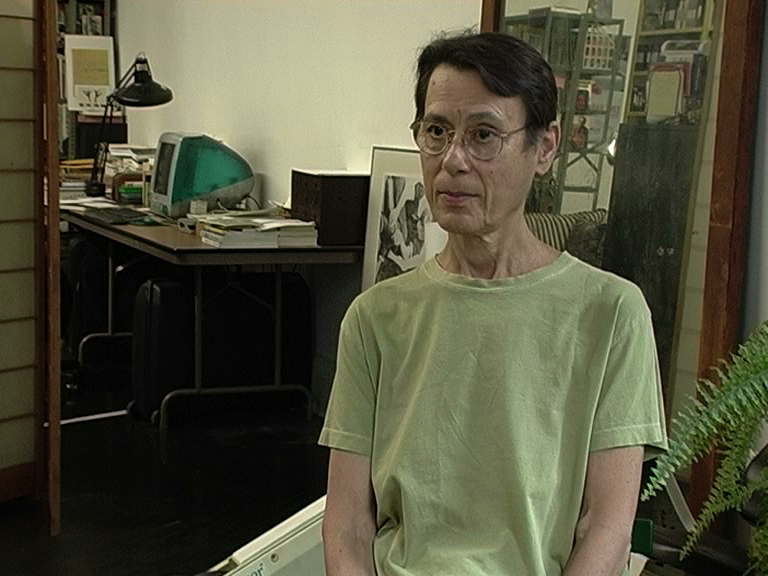S.R.: I want to ask you: What do you consider your strongest influence for your working as an artist?
W.A.: From the past? S.R.: Yes.
W.A.: Well, a close friend once said: Always go to the president of the company. And of course, Leonardo would be the president of the company. So all of the Blind Work is involved with that. And there is one in the other room that you may want to take a picture of which is going from the center out. A Blind Work. And it’s in the other room, so we all set up here, so we won’t do it.
I think that Leonardo and Marcel Duchamp are the two largest influences in art, in the art world. And I think Nietzsche was a very strong influence on the writers. I consider him a great artist. I consider him a great artist as well as everything else.
And I think Thoreau was an example for me. And it’s very interesting that Thoreau and Nietzsche overlapped. And they both went mad. I find that very interesting. They were both of extraordinary penetration – extraordinary penetration! They saw things the closer to the way they were, in my opinion, than anyone I know of in the 19th century. And there are quite a few parallels between them, in fact. Thoreau said: Simplify. Simplify. And if you look at Nietzsche and of course Nietzsche’s insistence that you leave the teacher. You have to not only … if you’re a thinker, you have to not only learn to love your enemies, you have to learn to hate your friends. Zarathustra is leaving us. He’s: I’m leaving you. Now why are you worshipping me? Watch out that the statue doesn’t fall on you and kill you. So he was saying something very akin to Buddhism. The line is: Kill the Buddha, which I always interpreted to me in: Don’t look somewhere else for the answers, ultimately. You can read, you can talk to wise people, but ultimately you have to look within yourself for the answer or you’re not going to find the answer. And if there is an answer, it will be within yourself.

And Nietzsche, who was not a preacher, but the closest he came to preaching, was to say something that was in Buddhism. And I don’t know how familiar he was with Buddhism––I have a feeling, he was. But he was the only one in Europe that I know of that was writing that way. And Thoreau was the only one in this country that was writing that way. And reading those two, and reading the Journals of Thoreau, has been influential to me. So the work comes from all of these things.
And Marcel Duchamp, who, I think, exploded aesthetics when he wrote a recipe––what I call a recipe––when he wrote instructions for dropping a one meter long piece of thread from a height of one meter and then describing the, an then making a, cutting out the graceful arch. Well if you think of his influence, it’s stronger––if you look at what has been happening since––it’s stronger than the influence of Picasso and Matisse combined; if you look at where art has gone. So this man, who was kind of ignored––even by his own brothers––was doing something that was also to some extent eastern, when he described a piece that just happened and let it happen.
Now we talked earlier about his having said: Every word I tell you is stupid and false. And in fact, both John Cage and I independently––and then we later learned––we both tried that experiment a thousand times. And it might have been one of us lies because neither we tried every kind of thread; neither of us got anything like the graceful arch so he may have consulted his aesthetic prejudice of the moment. Or he could have been using some other kind of thread.
But anyway, those are the influences. And James Joyce was a great influence. “Finnegan’s Wake” has been a great influence because it attacked literature the way the “Large Glass” attacked art at that time. And I think that I’m very influenced by Duchamp’s remark: Any painting that doesn’t shock isn’t worth doing. I think I’m very influenced by that. Something that’s very simple can shock in one way, and something that’s very complex can shock in another way.
So those were my influences. I was in Philadelphia and I was able to see the Duchamps when I was quite young in the Philadelphia Museum. And my first reaction was––I’ve been drawing just about every day since I was about five or earlier, and seeing some of those concoctions of his, I remember my first reaction was: Either this guy doesn’t know what he’s doing, either he’s lost or I’m lost. It was a very healthy reaction. It wasn’t my idea of what art should be. And it wasn’t the idea of anyone at that time. They knew he was brilliant. Breton thought he was wasting his time because he knew how brilliant he was.
So these are the people who have influenced me, I think.

S.R.: The next question is more about what is the result of, maybe the heavy result of your production or could be the result. Is there something that you call the aim or the goal of your practice?
W.A.: Self-employment. Self-employment is probably the main aim.
And I’m sure that that’s something very similar to what John Cage has said. I met him in 1965 and although I had done the “Urination Piece” (which is over there) in 1963 where I poured concrete, a concrete footing and then, before it completely set, I urinated on it. And I had done “Sink”. Actually the “Urination Piece” was ‘61 when I was still in Philadelphia. “Sink” was done in ‘63. These pieces were done before I met John Cage. Almost everything else that you’re likely to see was done after I met him. But when I had done the “Wall Removals”, I had already had met him. But the “Wall Removals” were connected with “Sink”, as I mentioned to you. Because it’s an eating-away. It’s making art by taking something away instead of putting something, adding something.
All sculpture is either a mount or a hole. If it’s done with clay it’s a mount of some sort. And if it’s done with a chisel it’s a bunch of holes. So if you want to reduce it to physical properties, it’s either a mount or a hole. And I was interested in making some simple things that were a hole rather than a mount.
And then “Issue”, which is the four-and-a-half inch removal, vertical removal, is both, a mount and a hole. By stacking it up, I did something that I thought in a humorous way and in many other ways managed to be both, a hole and a mount.
I knew about “4:33“, I am quite sure that I knew about that. Probably before I started everything. That would be 1960, it was the first time I started putting dates on things. I mentioned you that I was married, well i was the father of three by time when I was twenty-one, I was a successful business-man when I was twenty-two. And I was drawing every day but I didn‘t seriously dared to call myself an artist until I was twenty-seven. And that would be 1960. And that would the first time I put a date… But the first time as an adult it was 1960, I was onely twenty-seven when I was still running a business at that time. But I did know John Cages work and I had recordings that were available and had been to a concert, he had come to New York for a concert. I believe 1958 my twenty-fifth year. And this is a few years before I moved to New York. I knew his ideas and I knew his thinking. And his thinking in “4:33“ which––if the audience doesn‘t know––a piano sits with a stop watch at a piano and at the beginning of the performance starts the stop watch. And it‘s in three movements. And the piano is… whether sitting, whether he is standing, whether the keys are visible or the keys are closed. But he sits for four minutes and thirty-three seconds. And it‘s the sounds that are happening at that time. That is John‘s piece. And I think I knew that, I‘m quite sure I knew that at the time that I was doing some of these things in the early 60s. So he was an influence also. And Duchamp was an influence on him.

S.R.: What do you consider as your paradigm? If we say Conceptual art has something to do with a conception of a specific situation, a specific way of production, a specific way of thinking, can you fix something like a paradigm for yourself or define something like a way of production?
W.A.: My thought when I first heard the term Conceptual art, Concept art, it was first called. Sol LeWitt might have changed this to Conceptual art and it kind of stuck. I said to myself and I said to others, but all art is conceptual. It is not the hint, I… [coordination] of Leonardo that makes it interesting to us. You know half a millennium later. Or the art to hand [coordination] of the van Dijk brothers when they invented oil painting, is the idea that they were able to put into a visual form. So I see Conceptual art as a totality. I see Conceptual art as repetitive. In my opinion art is conceptual. The thing that moves us about art, the thing that touches us is always the idea. It‘s always the idea. And what they mean by Conceptual art obviously is that the techniques that were usually considered, you know the cine qua non of making art are no longer necessary. And of course if that‘s the case then Conceptual art started with the––not the bicycle wheel––but with the bottle rack. Here will somebody say: this is my sculpture. Take it or leave it. And he didn‘t need any technique for that. He had technique but he didn‘t need it for that. It has that in common with what people consider Conceptual art.
But if I‘m doing a portrait, I make portraits with either guache for money when I was in Philadelphia. And people liked this portraits and sometimes with oil based pastels. But still, if pastel decides to hold on to it it means that somebody… felt that the ideas they were in there were interesting. There can be contemporaries of Vermeer who had just as much art to hand [coordination]. And today I‘m sure the commercial artists have just as much art to hand [coordination] as Jasper Johns… But it is the idea that make us decide this is a kitsch or this is advertising, this is design and this is high art. And then [pastelery] sort of shakes it down and the stuff hangs around and doesn‘t get destroyed. And [pastelery] is able to deicide, and they are all incredible accidents. If a sixteen year old Yewish composer named Mendelssohn had not come across some manuscripts we might not know that Johann Sebastian Bach existed.
I mean this were completely [laughs] they were forgotten. And if you think there is a god, he said, we will going to find this sixteen year old kid find this manuscripts and he‘s going to be one of the few people who instant know this is one is one of the greatest treasures left on this planet. And I‘m sure there are works of art like that. I mean if you look at Chinese painting of 900 a.d. you know, half a millennium before Giotto your head will spin. I like to say that the Greeks did everything first, the Chinese did it before them. [laughs] I mean if you look at that culture in it‘s humbling, that is humbling. Now they say the 21. century will be the Chinese century. And I say it‘s about time… As the Russian culture did which is also an unbelievably rich culture. It seems that kind of a diabolical thing that goes on that you have a culture that produces Chuang Tsu or Dostojewski… And I hope it is the Chinese century. It‘s about time. And if you look at this painting, you just can‘t even believe it. We are so controlled by our own egos and by our own history that it‘s hard to look at it with fresh eyes. But if we do––we would say yes Giotto was without a question a titan––but these people had titans in that field four hundred years before he was around. And it is still there. And then [pastelery] is a crap shoot you know. It‘s a chance situation. You know… was lucky…
My own work is a daily effort to survive. I think that‘s the best thing I can say about it. I‘m trying to survive as an artist. I do something that fits my esthetic understanding at any given time. And that‘s always changing. And that makes it difficult. The world likes a thumb print in an artist… A thumb print it‘s identifiable. So everyone tries to survive. I try to survive as an artist.
And James Joyce said: A man of genius makes no mistakes. Which is a title for, which could be a title for various blind, so-called unsighted works, or blind works.
And I stand on a ladder. Here. And first I cut into the paper. This one I accented a little bit with pencil. But now I’ve done many where it is only the dust from the lead dropping on it that makes the circle more visible and more visible and more visible. Because the surface is distressed and picks up the dust in a way that the surface of the paper does not. And if you get close, you can see – I could put a light on, if that would be better – if you get close you can see the way the point dances on the surface. And I can show you how this is done…






